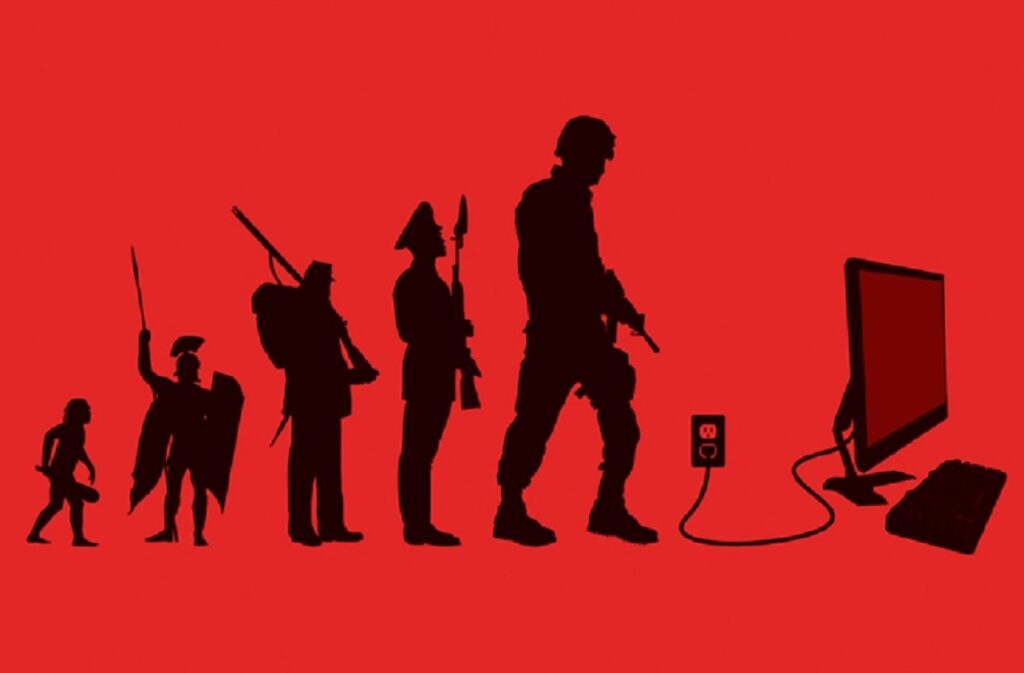Throughout history, wars have been won by forces turning new technologies to their advantage.

5 January 2023 – Throughout history, wars have been won by forces turning new technologies to their advantage. The 1415 victory of English King Henry V over the French at the Battle of Agincourt came courtesy of his archers and their newly developed longbows, raining arrows over a range the French could not match.
The First World War, however, saw a breadth and scale of technological innovation of unprecedented impact. It was the first modern mechanized industrial war in which material resources and manufacturing capability were as consequential as the skill of the troops on the battlefield. Heavy artillery, machine guns, tanks, motorized transport vehicles, high explosives, chemical weapons, airplanes, field radios and telephones, aerial reconnaissance cameras, and rapidly advancing medical technology and science were just a few of the areas that reshaped twentieth century warfare.
The war in Ukraine is seeing another historic first, with technology cutting through the fog of war. As I have noted in previous posts, drones, phones and satellite technology have tracked Russian military convoys, tracked the assembly of Russian military infantry and missile positions, intercepted Russian radio communications and mobile phone conversations, and much, much more.
Most of this is through Western governments’ sophisticated satellite and other surveillance assets, but commercial satellite imagery of the Ukraine conflict is helping a growing army of open-source intelligence analysts offer near real time assessments of battleground developments – illuminating for the public what was previously the domain of spy agencies. Governments are no longer the only place to go for high precision satellite data. Thanks to the explosive growth of the private satellite industry, the volume of imagery is greater and turnaround time faster compared to prior conflicts, such as Russia’s 2014 annexation of Crimea.
And, as we have learned over the last nine months, these images have exposed the truth about Russia’s war in Ukraine in near real-time, exposing the aggressors’ lies and accelerating efforts to provide compelling evidence of Russian war crimes, convincing Western leaders to ramp up sanctions on Russia and accelerate weapons supplies for Ukraine.
How all of this will affect the final outcome of the war is very unclear. But in my next, long piece in my series on the Ukraine War I am going to try and tie together all of these technological advances. In the meantime, I want share just one bit of that piece-in-progress.
Please watch the following video created by a Russian sniper and picked-up by one of my OSINT sources. I did not have time to add subtitles but I have a brief summary follows below the video. The sniper is showing how a thermal weapon “sights” a target using the latest infrared imaging technology to reveal temperature variations and fluctuations that occur in both natural and man-made objects – and can send information to generate an image even in total darkness, or behind walls:
What the sniper is saying is this:
“A search for targets is carried out through a thermal imager Venox Patriot LRF, and the view from the imager is transmitted to the tablet. The thermal imager is pointed at the window and is slowly moved from the right to the left across the walls, to search the sector one meter at a time. If the camera detects an enemy behind the wall, the shooter opens fire in short bursts from the RPK-74 machine gun with a silencer and a 60 round magazine. This method allows you to destroy the enemy without being exposed to his fire.”
The sniper could not point further to the left side of the window saying that it would expose him. Using that set-up, according to the Russian sniper, he eliminated two Ukrainian servicemen that day, pointed to the windows of their location 200 meters away.
These weapons are being shipped to the Russians via Turkey.